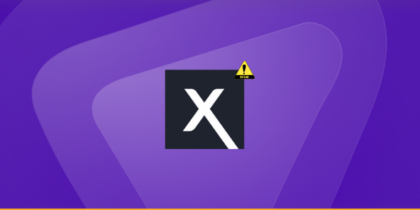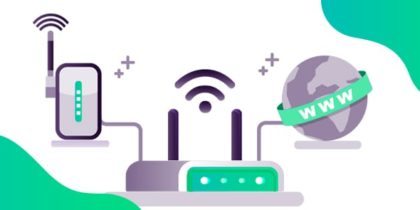Table of Contents
ClickJacking is a shady technique used by bad websites to trick you. They hide clickable elements behind other stuff on the webpage, so when you think you are clicking on one thing, you are clicking on something else. It’s like a secret trap!
What is ClickJacking?

ClickJacking is a tactic where an invisible web page or HTML element is placed within an iframe, strategically layered on top of the visible webpage.
You may be clicking the visible page, but you are connecting an invisible element on the additional page placed on top of it.
The invisible page might be harmful or a genuine page you did not plan to see, such as a page on your banking site that permits money transfers.
For example, suppose you selected the “log-in” option, but instead of signing in, it prohibited the entire unrelated action, like sending you to a YouTube link.
What is Clickjacking With Examples?
Here are some examples of clickjacking in different scenarios:
Social Media Clickjacking
Facebook and Twitter are often targeted by clickjacking attacks due to their large user base and easy sharing options.
These attacks deceive people into “liking” content they have no interest in, leading to the spreading of dangerous links, scams, and false information.
A recent hack impacted over 100,000 Twitter users and had many negative consequences.
Fake Download Buttons
It is essential to be cautious of other links that may be click-jacking scams.
These fraudulent schemes may lead you to websites that attempt to initiate the download of harmful software or unwanted applications onto your device without your awareness or permission.
It is essential to always stay vigilant and only click on links from trusted sources. This ensures your device and information is safe.
Hidden Subscription Buttons
Some websites use clickjacking to trick users into subscribing to premium services or newsletters without their knowledge.
Click-jacking is a malicious technique where a website disguises the appearance of a button or link to trick users into clicking on it.
The click then triggers an action the user did not intend, such as subscribing to a premium service or newsletter without their knowledge or consent.
This can result in unwanted charges and spam emails, making it essential for users to be aware of this type of online fraud.
Types of ClickJacking Attacks
There are several ClickJacking attacks, each with a distinct strategy and objective.
Knowing their many forms, you may more effectively identify and defend against clickjacking attempts.
Like-jacking
Social media platforms are vulnerable to certain forms of abuse.
One such practice is “like-jacking,” where users are tricked into liking a page they didn’t intend to.
In addition, Facebook accounts are also at risk of clickjacking. In 2009, Twitter was targeted by a continuous process of click-jacking links, where users clicked on a tweeted link that led them to a website, which then tweeted the source to their followers, inviting them to click on the link as well.
Cursor-jacking
Cursor-jacking is a form of UI redressing that tricks users into moving their pointer.
It creates a duplicate cursor and attaches it to the target at an odd angle, causing unintended actions. It was initially made possible by Firefox bugs.
Scams involving money transfers
Fraudulent money transfers are illegal and can take various forms, including wire transfers, bogus checks, and phishing scams.
What is the Cause of ClickJacking?
Clickjacking may deceive users from clicking on links they didn’t want to. Here are some of the causes of clickjacking.
Downloading Malware:
Installing malware is one of the reasons for the disadvantageous consequences of clickjacking.
It’s essential to be cautious and prevent clicking on anonymous links to keep your device secure.
Stealing Credentials
Stealing credentials is the act of getting access to users’ personal information, like usernames and passwords, intending to use them for a vicious motive.
It can get access to your private accounts and potential business loss.
Susceptibility in web browsers
Attackers may insert fake components across authentic material on websites by taking advantage of browser errors.
Attackers can use these errors to fool how webpages show or interact without the user’s knowledge or consultation. You must keep your browser up to date with the latest security.
Malvertising
A malicious ” malvertising ” technique entails inserting malware into trusted web advertisements.
Viewers, therefore, get mistakenly directed to hazardous sites through these deceptive ads.
Users’ safety online can be put in danger if malicious malware found in content often sends them to dangerous websites.
What is the Difference between ClickJacking and CSRF?
Method
Clickjacking involves deceiving users into clicking on hidden elements, while CSRF tricks a user’s browser into making unauthorized requests.
Objectives
Clickjacking aims to manipulate and trick user actions into unintended actions, while CSRF aims to perform unauthorized actions on a vulnerable website.
Exploitation
Clickjacking exploits UI deception, while CSRF exploits the trust between a user’s browser and a vulnerable website.
Impact
Clickjacking can lead to unintended actions performed by the user, while CSRF can result in unauthorized actions being performed on the user’s behalf.
How Can I Protect Against ClickJacking?
We have covered frame-busting scripts, a frequently used browser-side defense method. We have shown, however, that it is often straightforward for an attacker to get through these defenses.
As a result, server-driven techniques that limit browser iframe usage and prevent clickjacking have been developed.
Clickjacking is a vulnerability that exploits the UI to trick users into unintended actions. The success of attacks depends on browser compliance.
X-Frame-Options
The X-Frame-Options determines whether a program can display a page as a bundle, an expansion, or a thing. It is used when site pages are pushed through a program.
The header allows the site management to request how iframes or other items should be used. By adding extra code to the title of a site page, the site manager can choose whether the circuit of a site page inside an edge can be blocked.
However, the X-Frame-Options mechanism is only sometimes dependable, as it was first developed for Internet Explorer 8. The web progress social event should take this into account while using X-Frame-Options.
Framekilling:
Websites and online apps can employ a framekiller, sometimes known as a framebuster or framebreaker, to stop web pages from appearing inside frames.
A Web browser window’s partition, or frame, can function as a smaller window. Typically, a framekiller is employed to defend against clickjacking attacks or stop websites from loading from within a frameset without authorization.
X-Frame-Options and Content-Security-Policy headers, which stop the page from ever loading in a frame, have essentially superseded framekiller scripts. JavaScript does not need to use these headers, as they are compatible with all current browsers. (Source: )
Is ClickJacking a Cyber Threat?
Many hazards exist in the field of cybersecurity that can affect both your personal and professional life. A threat of this kind is clickjacking.
ClickJacking, although still relatively obscure, has emerged as a significant global threat to internet users.
It is a cyber crime. It includes scamming users by mistakenly clicking on hidden dangerous content on websites, which may harm your personal information.
To protect against this type of cybercrime, you should keep your web up to date,allow clickjacking, use browser extensions, and always be aware of suspicious web pages or sites.
You should stay informed about internet threats and practice safe browsing habits.
How Do You Detect Clickjacking?
In a technical context, websites that can be embedded within an iframe are potentially susceptible to clickjacking attacks.
Now, how can you evaluate your website’s susceptibility to clickjacking? One approach is to craft a specialized HTML page and attempt to embed a sensitive section of your site within an iframe.
The Open Web Application Security Project (OWASP) offers a sample HTML code for conducting this assessment.
3 Primary Strategies Are Available to Stop ClickJacking
- Transmitting the appropriate frame-ancestors directive response headers required by the Content Security Policy (CSP) to tell the browser not to permit framing from other domains. The X-Frame-Options HTTP headers are still in use for older browser compatibility and gentle decline.
- Use SameSite=Strict (or Lax) authentication cookies appropriately unless they specifically need None, which is uncommon.
- Using protective code within the user interface to guarantee that the active frame is the highest level window.
How Does Clickjacking Collect Personal Data?
You will click items, input your credentials, or divulge other critical information because you think you are on a trustworthy website.
Although you will think you are doing everyday tasks, the invisible fields will lead you to inadvertently download malware or provide your personal information to online crooks.
Cybercriminals might trick you into visiting their fraudulent interface by posing as official websites in their advertising, phony emails, messages, social media posts, or malicious pop-ups.
Stay Alert to Avoid Being a Victim
Potential attackers are unrelenting in their attempts to use a variety of attack routes to get access to your system. You need to strengthen your cybersecurity posture with the same level of vigilance to protect your company and its consumers.



